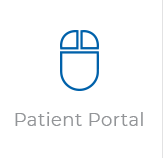Osteoporosis in Women

What is osteoporosis and who does it affect?
Osteoporosis causes bone to lose its calcium content and strength, leading to increased risk of fractures, especially in the hips and spine. Hip fracture requires major surgery, and spine fracture causes height loss, stooping posture and lots of back pain! Osteoporosis affects mainly women after menopause, but also men, especially those over 50.
Why are women more prone to getting osteoporosis?
Men reach a higher maximum bone mass than women because of testosterone, which builds bone more than estrogen, so on average women have smaller and thinner bones than men. Men can and do get osteoporosis, though, especially if they have used prednisone. The rapid drop in estrogen after menopause puts women at an especially high risk of osteoporosis and then fracture.
How can one be proactive and prevent osteoporosis?
Women reach their highest bone strength around age 30, so ensuring young people get enough vitamin D and calcium can help reach their best bone strength. Tobacco use, heavy consumption of alcohol and frequent or long-term use of prednisone or other steroids weaken bone and increase risk of fractures as well. Older men and women can prevent osteoporosis by getting lots of weight-bearing exercise like walking and continuing to supplement calcium and vitamin D.
Are there ways to treat or reverse the effects of osteoporosis?
While bone loss cannot usually be completely reversed, bone strength can be increased and risk of fracture lowered by taking one of several prescription osteoporosis medications. Pills taken once a week or once a month can slow down bone loss. Injections taken once or twice a year are an option when the pills cause stomach upset. Daily injections taken for two years are the most effective treatment, and are prescribed for patients who have had fractures despite taking one of the other treatments.
How can osteoporosis be detected? What can one look for and what steps should you take?
Osteoporosis doesn’t hurt and doesn’t cause any problems unless you break a bone! Because you can’t feel it, you have to find it with a bone density screening test. It takes about 5 minutes, is completely painless and not in an enclosed space, and exposes you to less radiation than a chest X-ray. The bone density test result can be normal, low bone mass (also called osteopenia), or osteoporosis. Everyone should take calcium and vitamin D, and some with osteopenia and all with osteoporosis should get prescription medicine to strengthen their bones.







